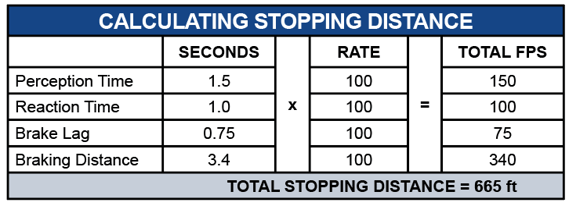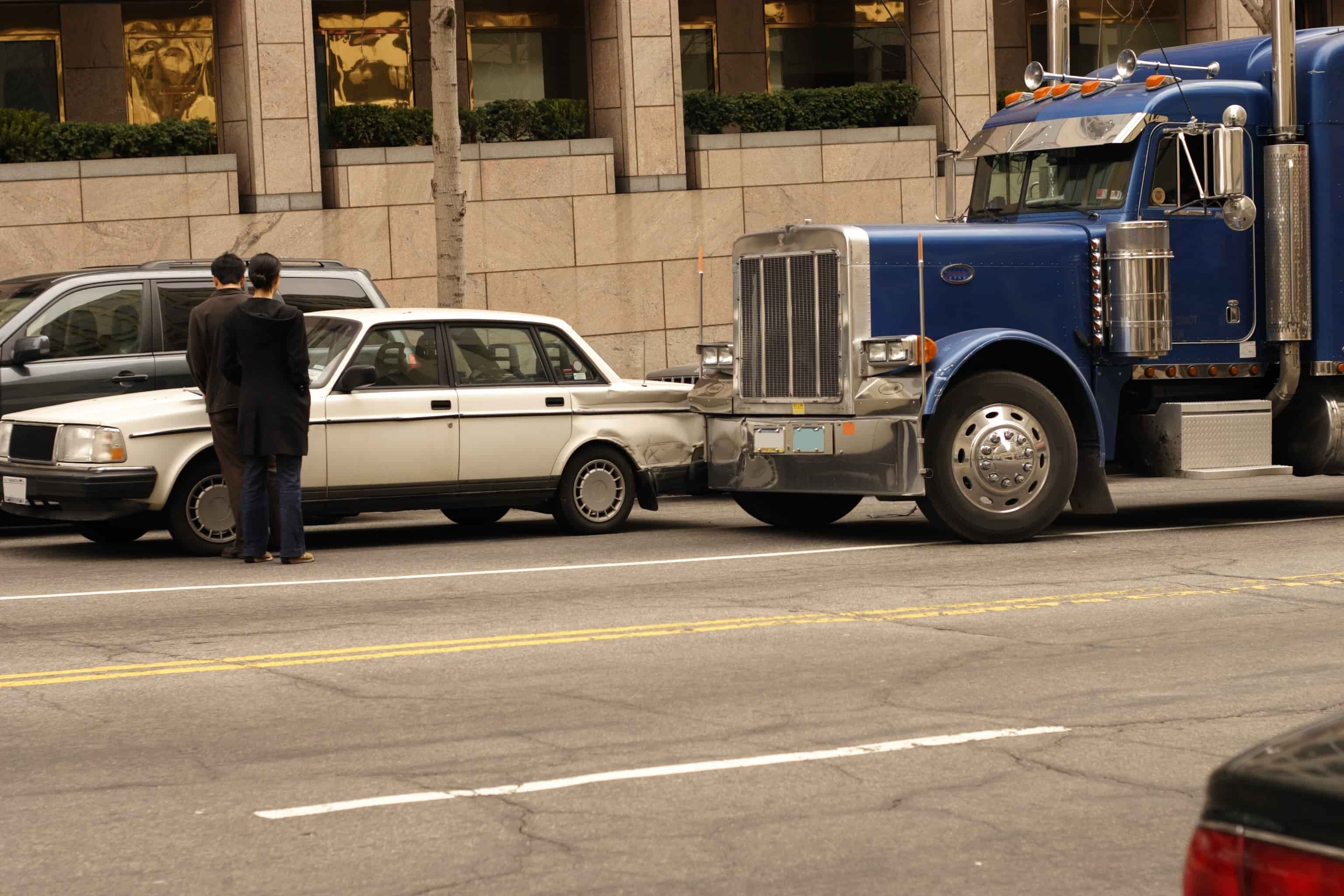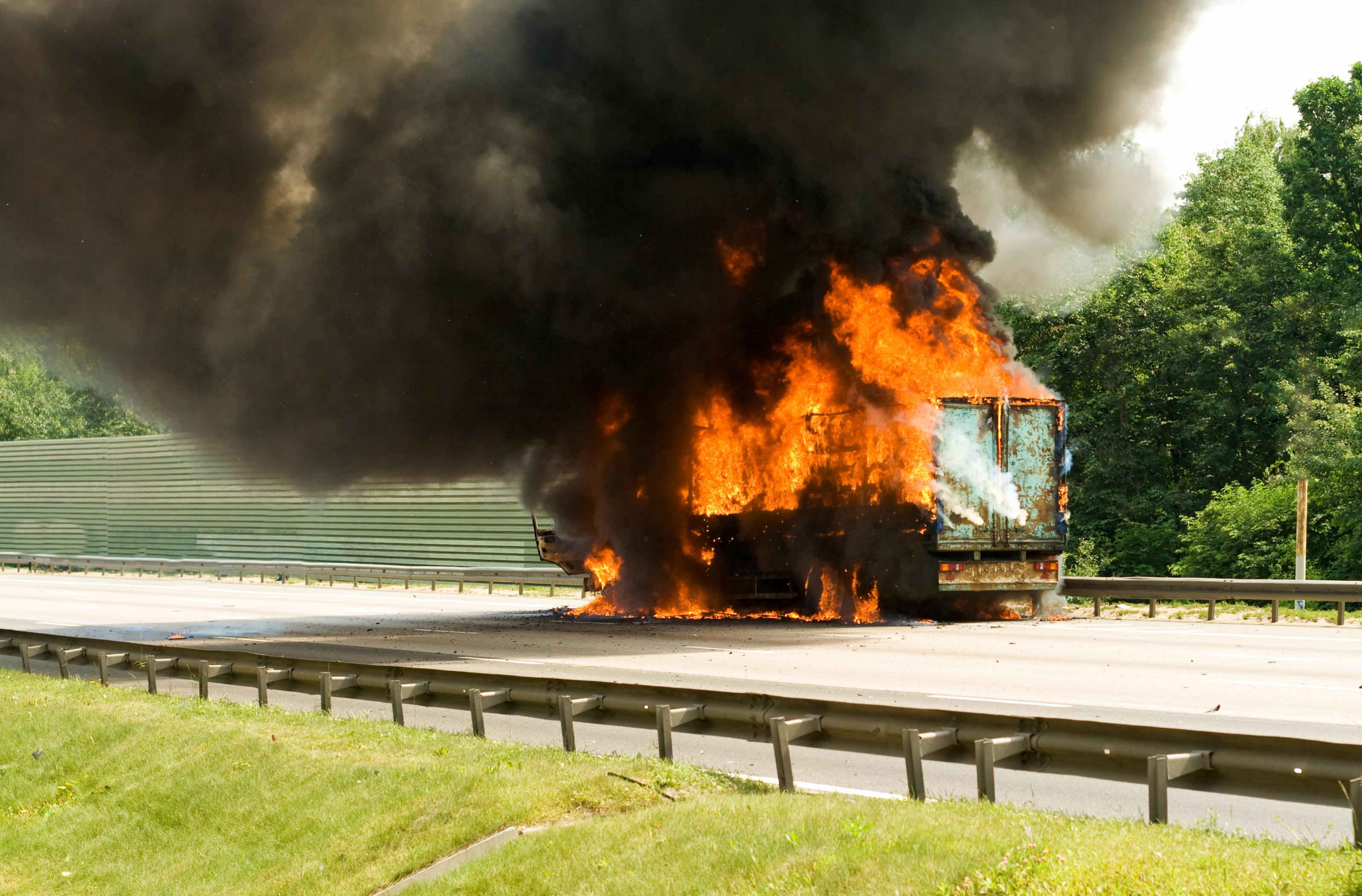Understand Proper Following Distance
Maintaining a proper following distance behind the vehicle ahead can be a challenge in traffic, but seasoned drivers tell us it is not impossible. The goal is to leave yourself enough room to stop your truck in time to avoid causing a rear-end crash. Read the information below and ask yourself how you can improve your driving.
WHAT IS THE PROPER FOLLOWING DISTANCE?
To calculate how much following distance you need, you must first know how much distance your truck needs to be able to stop.
Four factors that affect stopping distance are:
-
Perception time – Time it takes to perceive the need to stop (approx. 1.5 seconds).
-
Reaction time – Time it takes to press your foot on the brake pedal (approx. 1 second).
-
Brake lag – Time it takes for the brakes to engage (approx. 0.75 seconds).
-
Braking distance – Time it takes for the vehicle to stop (approx. 3.4 seconds).
At 65 mph, a tractor-trailer is moving at nearly 100 feet per second (fps). The chart below shows how to calculate your truck’s stopping distance at 65 mph in ideal conditions.

Crash prevention tips
 Count Seconds
Count Seconds
Count the number of seconds you are behind the vehicle directly ahead of you to determine if you have proper following distance. When the vehicle directly in front of you passes a stationary object, like a tree or road sign, start counting one-one thousand, two-one thousand, etc., until you pass the stationary object. Based on the chart above, at 65 mph you should be at least six second behind the vehicle in front of you. If you are closer than six seconds, slow down to establish the proper following distance. If other hazards are present, like rain, snow, etc., add at least one second more for each hazard.
 Slow down
Slow down
Try to drive 2-3 mph below the flow of traffic, not to exceed the posted speed limit. This practice allows faster vehicles to naturally pull away from you and reduces the mount of braking and accelerating you have to do.
![]()
Avoid distractions
Do not let distractions inside or outside the cab lessen your perception and reaction times. Stay focused on the task of driving.
![]()
Observe proper speed for conditions
When road conditions are slippery, reduce your speed and increase following distance.
Note: These lists are not intended to be all-inclusive.
The information in this article is provided as a courtesy of Great West Casualty Company and is part of the Value-Driven® Company program. Value-Driven Company was created to help educate and inform insureds so they can make better decisions, build a culture that values safety, and manage risk more effectively. To see what additional resources Great West Casualty Company can provide for its insureds, please contact your safety representative, or click below to find an agent.
© Great West Casualty Company 2023. The material in this publication is the property of Great West Casualty Company unless otherwise noted and may not be reproduced without its written consent by any person other than a current insured of Great West Casualty Company for business purposes. Insured should attribute use as follows: “© Great West Casualty Company 2018. Used with permission by Great West Casualty Company.”
This material is intended to be a broad overview of the subject matter and is provided for informational purposes only. Great West Casualty Company does not provide legal advice to its insureds, nor does it advise insureds on employment-related issues. Therefore, the subject matter is not intended to serve as legal or employment advice for any issue(s) that may arise in the operations of its insureds. Legal advice should always be sought from the insured’s legal counsel. Great West Casualty Company shall have neither liability nor responsibility to any person or entity with respect to any loss, action, or inaction alleged to be caused directly or indirectly as a result of the information contained herein.
.




